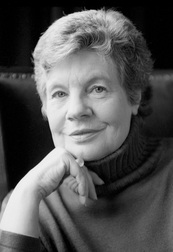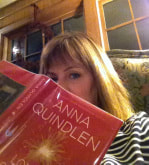 A.S. Byatt on writing historical fiction In 2002, Jonathan Walker interviewed A.S. Byatt and Lawrence Norfolk at the University of Cambridge. Walker saw this as an opportunity to learn from these two authors. Booker Prize winner, A.S. Byatt is a hugely successful British author and one of Book Club Extraordinaire’s favorites. Here are some highlights from Walker’s interview. A.S. Byatt didn’t begin reading history until she was fifty-five. She admits her education was “narrow.” She had never studied the political history of Europe. This tidbit surprised by me having read The Children’s Book last year. I am so glad she changed her mind about studying history. She was intrigued with writing historical fiction by the appearance of an increasing number of fictional works “interested in what historians felt they could not say, because it was not proper to say, and because they didn’t know. “ Also the idea “in which the imagination persists in filling out what you have not been told.” It is these gaps and spaces that she finds quite exciting. When she is researching for a novel, she doesn’t want to read other novelist’s accounts of the time period. She wants to read: “endless diaries and boring biographies, minor autobiographies and little bits of newspapers.” It is then she can use her imagination. When writing about dead characters, she believes you owe them some respect. You must tread lightly. When writing about the real Emily Tennyson, for Angels and Insects (1992) Byatt wanted to be fair to her. “I had read all the published letters I could get hold of, which were not many. So I had an idea of the real woman’s tone of voice, which was a mixture of overly romantic and very dryly comic, which I rather liked.” She let her imagination fantasy about the facts. She used Tennyson’s voice to splice the imaginary woman with the real woman. “When I think about writing, I think about it as telling the world to yourself. And I think that, as I’ve gotten better at writing, I’ve increasingly turned my world through a kaleidoscope of different ways of telling.” An Interview with A.S. Byatt and Lawrence Norfolk, Jonathan Walker, Contemporary Literature, Vol. 47, No. 3, Autumn 2006
0 Comments
In preparation for tomorrow's discussion on A.S. Byatt's The Children's Book based loosely on the life of E. Nesbit, one of Britain's most loved children's authors, I found a website called the Classic Bookshelf that has free great literature. If interested, there are some of E. Nesbit's books available to read for free online. The Five Children and It was the first in a series of books she wrote to supplement the family income much like Olive Wellwood. Edith Nesbit was born in 1858, the daughter of Sarah and John Collis Nesbit, the head of a British agricultural college. She met and married Hubert Bland E. Nesbit when she was 18. She and her husband, a journalist, were both socialists and founders of the English Fabian Society. Bland was a philanderer who couldn't make a living. Nesbit was unconventional, cutting her hair short, dispensing with corsets, smoking habitually, and living flamboyantly. She was a prolific writer as she raised five children, one an illegimate offspring of her husband. The Nesbits inhabited Well Hall in the Kent countryside. They entertained many famous friends and colleagues. She died in May 1924. Read more on E. Nesbit at The Edith Nesbit Society website.
|

Kathy Corey
I'm an expert amateur or maybe an amateur expert. Archives
May 2021
Categories
All
|
 RSS Feed
RSS Feed
